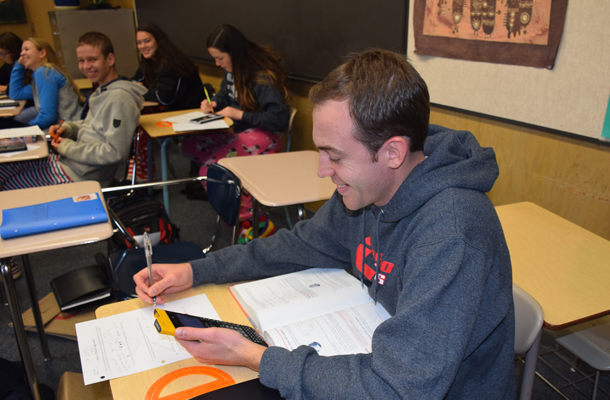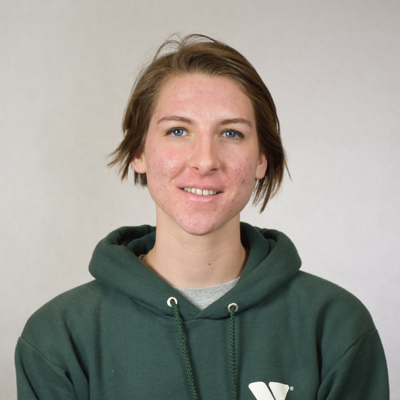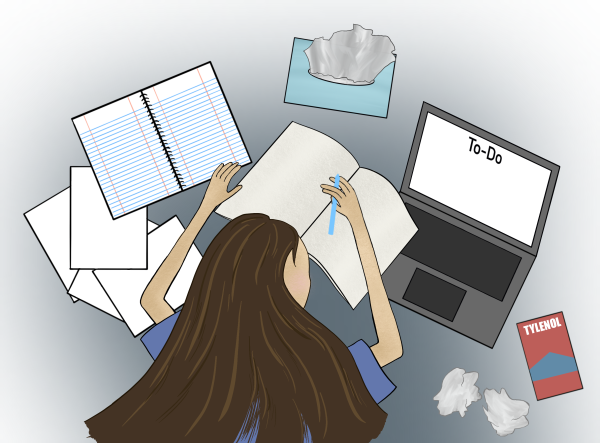Role Reversal Sends Teachers Back to School
January 3, 2017
Math teacher Petro Petreas and science teacher Tren Kauzer took a walk in their students’ shoes on December 12. Both were provided a release from their instruction duties and assigned a 6 period student schedule. The 2 completed homework the previous evening and then attend classes as if they were actual students. The simulation was part of the Challenge Success committee’s goal to help teachers understand what it is like to be a Campolindo student.
The day was coordinated by junior Isabel Ortiaga, a leader ship officer on the Challenge Success committee. “We went to this simulation at Stanford and the group there had an idea to do a teacher shadow day so teachers could get an accurate representation of what school is like,” said Artiaga.
Coincidentally, both Petreas and Kauzer are products of the Acalanes district. However, they were chosen because of their objectivity. “I asked them because I know they had been interested before and I thought they would give a good analysis of what happens on campus,” said Artiaga.
“It’s a tiring day. I learned that there were periods of stress throughout the day such as preparing for reading quizzes. Sitting for that long was exhausting, [while teaching] I at least get to get up and walk around,” said Kauzer. His schedule included a mix of AP and regular classes, including Spanish 4 and Furniture Design.
Petreas noted that even though he was once a student at Campolindo, things have changed. “The difference is that students tend to take more rigorous classes. There were fewer AP options back in my day and thus it wasn’t the norm to take an outrageous number of AP classes,” he said.
While Kauzer, who attended Acalanes High School, saw less of a disparity between his academic experience and that of today’s students, he did note that new technology has created new challenges. “I don’t think the rigor has changed much. The classes I took were just as hard as I remember them being. What has changed is that I didn’t have a cell phone in high school. I got a message from my wife and I stopped paying attention. I didn’t take my phone out but I stopped paying attention to the lecture and thought about what she was texting me and what was happening in my pocket for 30 seconds. That was a big difference from what I remember,” said Kauzer.
The week before winter break has a heavy testing schedule, which Petreas noticed correlated with less homework and more studying. “The classes I went to, it seemed like there was group work or independent study so teachers were definitely giving time to do the work. Most students chose to use that time, some didn’t. As long as a student wants to do the work, get the work done, it was manageable. I think taking many of them together definitely piles on top of each other,”said Petreas.
For English 3, Kauzer was expected to study for a reading quiz which he took with the class on the day of the simulation. He said that it was not very difficult, but acknowledged that he was only there for a day.
“There wasn’t much homework. That’s something we talk about as teachers, how much homework, and I did not see much. I think there was less homework because there were so many quizzes, like if I was a student this whole week I know I’d have a test today, have an essay due [Tuesday] and that essay would be revised and due on Thursday. There were all these tests looming,” said Kauzer.
Kauzer said that he would have liked a break from sitting at a desk during period 3 or 4. “If I had control over my schedule I would have loved to have yoga or art around 3rd or 4th period. Something where I could have worked hands on to wake up.”
Kauzer and Petreas will share their observations with the committee, which is made up of teachers, administration, counselors and other individuals who have a stake in improving Campolindo’s environment.
The main goal for the Challenge Success committee is to gather insight that teachers can bring back to their own classrooms and also help encourage more successful learning. “Ultimately we’ve talked a lot about student stress. It was the idea, a group idea of counselors and administrators and students thought that it would be beneficial if teachers went a day in the life of a student to kind of try to understand what it is you deal with day in and day out,” said Kauzer.
“I definitely saw it better than from my perspective as a teacher,” said Petreas. He noted that technology was a huge distraction during class, for himself and for other students he observed. “I guess they are used to it, well adapted to using their phones so I would call it distracted. They were using it various times throughout the day, but they were clearly better at handling than perhaps Kauzer and I are.”
Additional teachers will have the opportunity to role play as students later in the school year.
“Schools are always doing a reflection, seeing how we are doing in our jobs, as a school and an individual teacher,” said Roxanne Jackman, who instructed Petreas in Physiology during the experiment. Jackman considers the opportunity a form of staff development that increases engagement and helps teachers learn tools to make their curriculum fit the needs of students.



